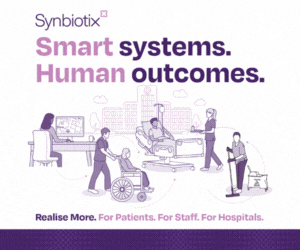“ICSs [Integrated Care Systems] are central to the delivery of the Long Term Plan. An ICS brings together local organisations to redesign care and improve population health, creating shared leadership and action. They are a pragmatic and practical way of delivering the ‘triple integration’ of primary and specialist care, physical and mental health services, and health with social care, consistent with what doctors report is needed.” (1.50. The NHS Long Term Plan)
The government’s ambition is that by April 2021, ICSs will cover the entire country, growing out of the current network of Sustainability and Transformation Partnerships.
The need for greater integration across the entire health and care system is something on which there is widespread agreement. The Long Term Plan also promises for the first time to “dissolve” what it calls the “historic divide between primary and community health services.”
In November 2018, the British Medical Association’s review, ‘Caring, supportive, collaborative? Doctors’ views on working in the NHS’, reported that 92% of doctors agree there should be shared pathways across primary and secondary care, with resources fairly directed to where care is delivered. Furthermore, 94% believe collaboration between primary and secondary care doctors will improve the quality of patient services and the patient experience.
Every ICS will have a partnership board, drawn from and representing Commissioners, Trusts, primary care networks, local authorities, the voluntary and community sector as well as other partners. The Care Quality Commission (CQC) will place a greater emphasis on partnership working and system-wide quality in its regulatory activity, so providers are held to account for what they are doing to improve quality across their local area.
The lessons learned from the integrated care ‘Vanguards’ provide the experience and the confidence to commit to the redesign of community services everywhere. One of the anticipated benefits is a reduction in pressure on A&E. Although Vanguards received less than one tenth of one per cent of NHS funding, they are said to have made a positive impact on emergency admissions.
With more services in the community, an improved primary care network, measures to reduce Delayed Transfers of Care (DTOCs) and initiatives to empower people to take better care of their own health (such as wearable monitoring equipment), the Long Term Plan expects to reduce pressure on emergency departments further. However, the plan also includes a set of milestones for all hospitals with a major A&E department to achieve in the short term. These include:
* Providing Same Day Emergency Care (SDEC) services at least 12 hours a day, seven days a week by the end of 2019/20
* Providing an acute frailty service for at least 70 hours a week and working to achieve clinical frailty assessment within 30 minutes of arrival
* Aiming to record 100% of patient activity in A&E, Urgent Treatment Centres (UTCs) and SDECs via Emergency Care Data Set (ECDS) by March 2020
* Testing and beginning the implementation of the new emergency and urgent care standards arising from the Clinical Standards Review by October 2019
* Further reducing DTOC in partnership with local authorities.
The Long Term Plan has been widely criticised with concerns over staff shortages and lack of funding to deliver on its promises at the top of the list. UNISON Head of Health, Sara Gorton says: “The plan is honest about the scale of the staffing challenge, but nothing will happen without more money to attract new recruits and train existing employees. The government must act now, or its plan will fall at the first hurdle.”
Jonathan Ashworth MP, Labour’s Shadow Health and Social Care Secretary agrees: “While the aspirations for improving patient care NHS England has outlined are welcome, the reality is the NHS will continue to be held back by cuts and chronic staff shortages.”
Read HEFMA’s response to the Long Term Plan from an estates & facilities perspective here.
The Long Term Plan can be downloaded here.












